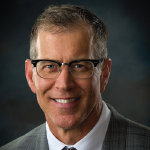
all_about_people / shutterstock.com
More than two decades ago, Charles King, MD, was completing his final year of residency in internal medicine, fairly confident he was headed for a career in gastroenterology. Then he took a rotation in rheumatology. The rest, as they say, is history.
“It’s a complicated field, and it requires a balance of left brained-ness and a great deal of art,” says Dr. King, a rheumatologist in Tupelo, Miss., explaining rheumatology’s appeal. “It also involves a lot of human nurturing because you have patients for 20, 30, 40 years.”
When Dr. King was young, his mother would bring him on Sundays to the nursing home where she worked. He developed a fondness for the elderly, and in his residency, he realized working with the elderly was among the privileges afforded rheumatology providers.
On top of that, “it involved knowing things few other doctors know,” he says. “Rheumatologists tend to be the geeks in the room.”
These were, however, also aspects of rheumatology that made Dr. King reluctant at first to incorporate advanced practice clinicians (APCs) into his high-volume practice.
“I didn’t think they could do what I do,” he says. “But then I reread the book Who Moved My Cheese, by Spencer Johnson, about embracing change, and I knew I had to add an advanced practice clinician into my practice.”
‘I see between 50 & 55 patients a day myself.’ —Dr. King
Bursting at the Seams
Dr. King is, by his accounting, part of one of the largest rheumatology practices in the country. In the past three years, he says, he has seen 5,600 unique patients: “I get asked frequently about how to construct a high-volume, high-efficiency practice.”
Tupelo, he explains, is an unusual healthcare market. It is rural, but serves a community of 40,000 people, drawing from a region with a population of more than 300,000. His practice, part of a large hospital with 650 beds, draws patients from southern Tennessee, eastern Arkansas, western Alabama and all of Mississippi. And, he says, there are only three board-certified rheumatologists in northern Mississippi. Recruiting new physicians has remained a challenge in his decades of practicing there.

Dr. King
“Eight years ago, I reached the point with my practice that I had to stop seeing new patients. My schedule was literally full, and I couldn’t see anyone else,” he explains. “It created angst in the community because physicians would refer patients, [but] I was unable see them.”
Out of necessity he turned to APCs, figuring out ways to utilize their abilities to enhance his practice. “They have absolutely made our practice better, and my patients have embraced them,” Dr. King says. “In order to see as many patients as we do, it’s a vital part of our practice.”
He works with two nurse practitioners currently, and the practice schedules 75 patients and sees six new patients each day. “I see between 50 and 55 patients a day myself,” Dr. King says.
The key, he says, is to utilize health professionals well. For example, he looks for people he can trust to perform at the highest levels of their skill sets. He trains his nurse practitioners for at least six months, having them spend time at his side as he sees patients. He gives lunchtime lectures on medication safety and disease management, and he entrusts his clinicians to engage in self-study.
“They take advantage of the rheumatology training modules through the ARHP,” says Dr. King, who also requires all of his providers to join the ARHP and encourages them to get involved in committees and other opportunities.
“The ARHP is a value-added enterprise; our APCs get much more than they give,” he says.
Lessons Learned
Dr. King shares some of the other lessons he believes account for his practice’s successful integration of APCs. One of the biggest, he says, is to not be in a hurry: “The rheumatology learning curve is very steep.”
Other lessons include:
- Plot out a training course for each provider;
- Make sure every patient knows they’re not being abandoned. “They should know you are still the captain of the ship and that you communicate with your APCs on a regular basis,” Dr. King says. He also tries to ensure that no patient sees a nurse practitioner two visits in a row and that the majority of new patients see him first. Those who do not are guaranteed to see him on their second visit or follow-up;
- Place all patients on the physician’s schedule and use APCs as necessary, while also reassuring patients they will receive the same level of service or care regardless of who cares for them; and
- Decide on a specified number of patients the physician will see in a day to balance that against other duties.
In addition, Dr. King has engaged his APCs in scoring referrals from other providers in the community, sending referrals back on patients who have not had a history taken, a physical exam performed and labs and/or X-rays completed.
“The quality of our referrals has gotten better,” says Dr. King. “We are not wasting our resources seeing patients who don’t need to be seen by a rheumatologist.”
Life is never dull for Dr. King, a self-described gym-rat who also enjoys travel—adding side trips to work trips whenever possible—and tracing his family’s genealogy. “I am Type A,” he says. “If you look that up in the dictionary, you’ll find a picture of me. I like to stay very busy.”
Kelly April Tyrrell writes about health, science and health policy. She lives in Madison, Wis.



